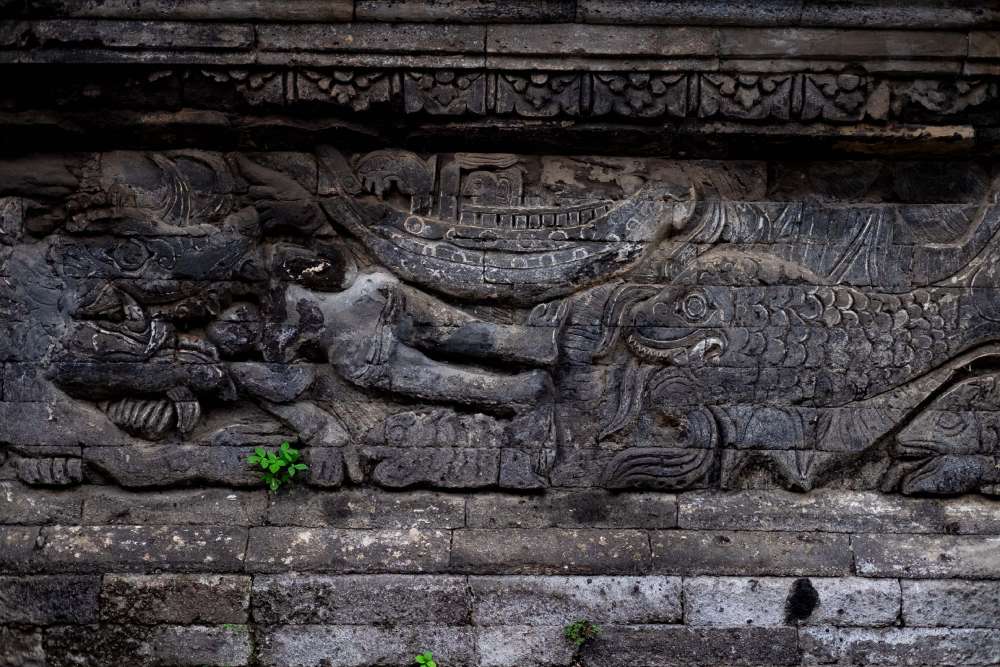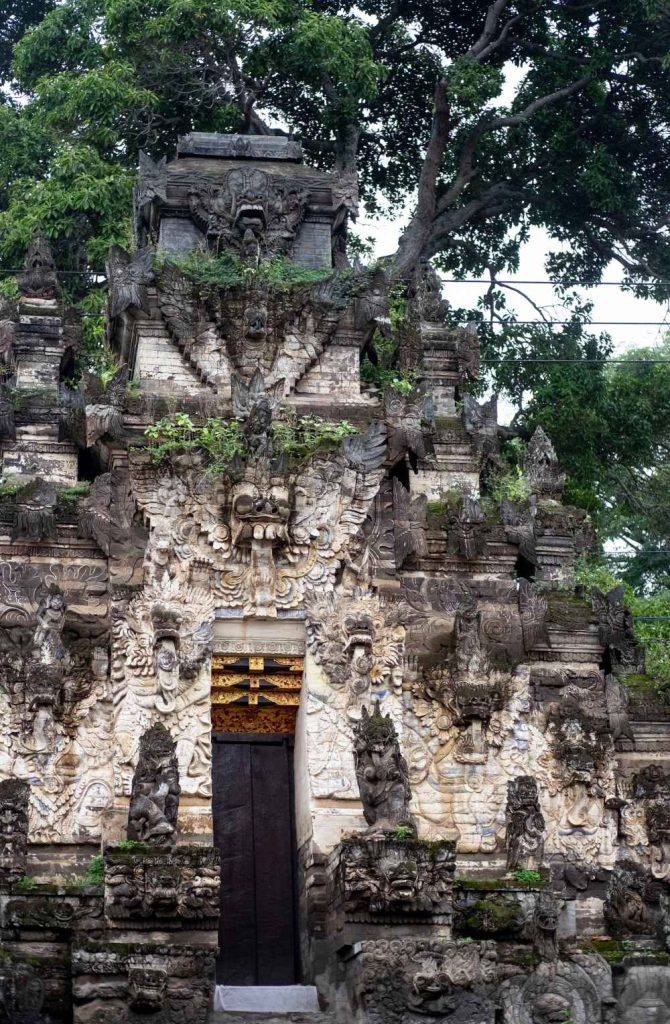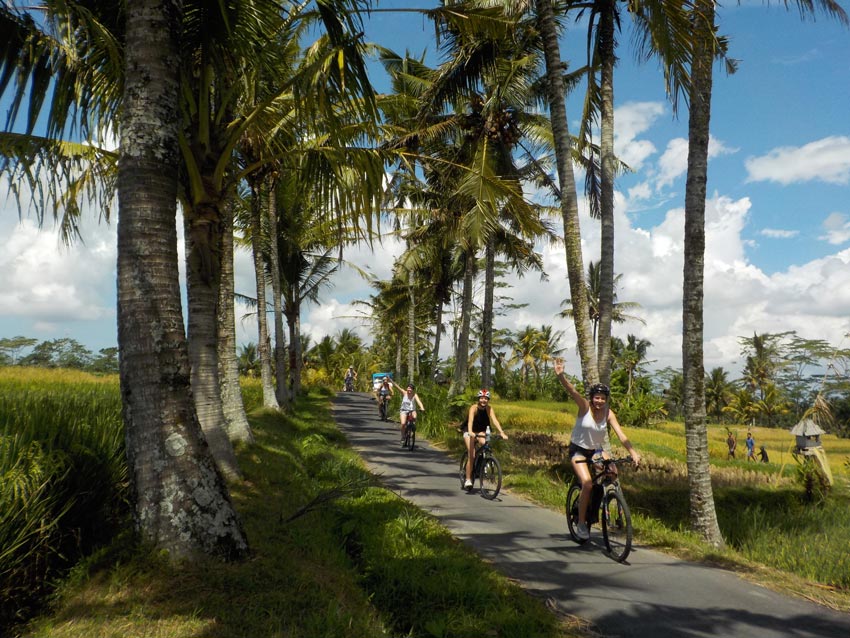
Mentioned briefly in our travel feature on North Bali, Pura Dalem Jagaraga deserves its own story, as this temple shares insight into Bali’s colonial history and indeed typifies the distinct characteristics of the northern temples.
Pura Dalem Jagaraga is found in the Sawan district of Buleleng Regency. It stands quietly on a village road, opposite a local elementary school. Surrounded by the area’s ‘everyday life’ — a local warung shop, a rice field canal, electricity wires overhead — it’s an easy spot to miss. Unless you’re a history buff this isn’t exactly a tourist destination, but the temple has some intriguing features and a history to match.
A local chronicler by the name of Ketut Suradnya took it upon himself to handwrite the history of the temple and its significance, now photocopied and handed out to visitors by his grandson. A charming touch to this humble site. He writes: “Prior to the Dutch’s arrival, this village was called Desa Sukapura and had a subak (irrigation) organisation called Jagasari… the name Jagaraga was used at the time as people were preparing for war, as it means ‘Watch Yourself’, as the Dutch were planning an all-out attack on the village.” This was back in 9 June 1848, when the Dutch colonists engaged in an armed conflict remembered as “Perang Jagaraga”, the Jagaraga War. Nearby, ‘Monumen Perang Jagaraga’ commemorates the fallen heroes of the battle, with the leaders Gusti Ketut Jelantik and Jro Jempiring immortalised as statues.


The village was heavily damaged in this conflict, and the original ‘Pura Dalem’ — the graveyard temple, or temple of death, found in every village — was destroyed. So, a year later, Pura Dalem Jagaraga was built in its stead.
The villagers at the time added some special features as they built this temple, and didn’t shy away from an opportunity to get creative.
The most intriguing are the reliefs of the temple walls, upon which unique scenes are carved: on the façade, Dutchmen arriving by boat (attacked by a crocodile) and plane, riding a car and a bicycle; another depicts a Dutchman riding his “Ford Model T” carrying a Dutch flag, with a passenger wielding a pistol. Clearly, these are stories of that time, carved into the stone for generations to remember. Other reliefs depict the Balinese and their everyday life, from climbing coconut trees, fishing, and playing with kites. These images present the tumultuous, chaotic scenes of the approaching Dutch — by land, air and sea — contrasted against the peaceful Balinese community. It seems true that art runs thick in the blood of the Balinese.


Some other interesting features include the statue of a winged lion, ‘Singa Bersayap’, the symbol of Singaraja whose very name comes from the words lion (singa) and raja (king). Furthermore, Ketut Suradnya also adds that the jeroan (temple’s interior compound) features both a Padmasana and Prajapati shrine, which he says is uncommon.
Whilst not a reason alone to visit the north, Pura Dalem Jagaraga is a great stop for history lovers, showcasing the intricate carving that is characteristic of north Bali temples. Read our travel feature on North Bali to find out what other destinations to explore in the region.


